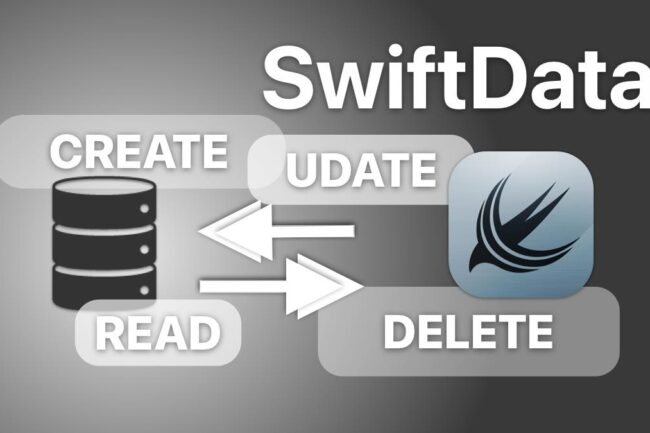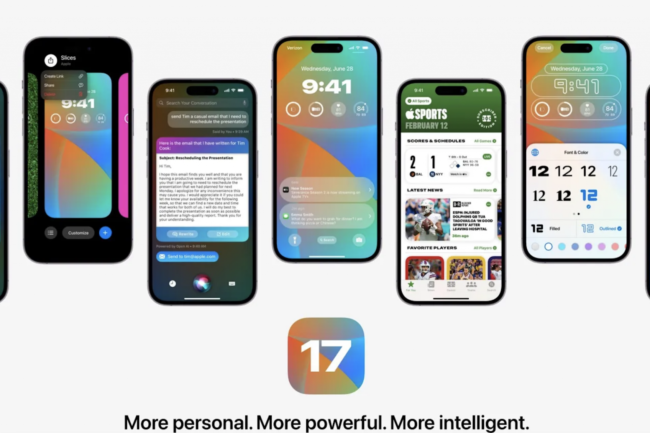Overview
In the realm of iOS development, where the evolution of tools is constant, SwiftData emerges as a powerhouse, transforming the landscape of data management and manipulation.
In this deep dive, we’ll unravel the intricacies of SwiftData, exploring its architecture, key features, and the ways it elevates the efficiency of iOS workflows:
- Overview
- Understanding SwiftData At Its Core
- Key Features That Set SwiftData Apart
- Best Use Cases For SwiftData
- Implementing SwiftData In Your Workflow
- Closing Thoughts
Understanding SwiftData At Its Core
At its essence, SwiftData is a data modeling and persistence framework designed for Swift-based applications. Seamlessly integrating with iOS and macOS projects, it provides a robust solution for managing data models, relationships, and persistence layers. SwiftData simplifies the complexities of data handling, allowing developers to focus more on the logic of their applications.
Key Features That Set SwiftData Apart
- Built On Top Of Core Data: SwiftData is built on top of Core Data’s proven persistence layer. SwiftData’s API is completely redesigned for Swift. Just like SwiftUI it focuses entirely on code without any additional file formats. By utilizing Cora Data’s proven persistence layer under the hood applications have a reliable and unified approach to data management, model definition, data relationships, and storage.
Industry Example: Applications dealing with intricate user profiles and preferences, like social networking platforms, benefit from SwiftData’s reliable and proven data persistence layer provided by Core Data.
- Type-Safe Querying: SwiftData’s standout feature is its type-safe querying system. With Swift’s strong typing system, developers can construct queries that catch potential errors during compile-time, reducing runtime issues and enhancing code reliability.
Industry Example: In financial apps where precision and reliability are paramount, SwiftData’s type-safe querying ensures accurate data retrieval and manipulation.
- Relationship Handling: Managing relationships between data models is a breeze with SwiftData. Whether it’s a one-to-one, one-to-many, or many-to-many relationship, SwiftData streamlines the process, allowing developers to express complex relationships with ease.
Industry Example: E-commerce applications with complex inventory and order management systems benefit from SwiftData’s intuitive handling of intricate data relationships.
- Asynchronous Operations: Recognizing the importance of responsiveness, SwiftData supports asynchronous operations. This ensures that data operations, especially those involving large datasets, do not block the main thread, maintaining a smooth user experience.
Industry Example: Messaging apps with constant data updates leverage SwiftData’s asynchronous operations to ensure real-time responsiveness without compromising user interactions.
- Migration Capabilities: SwiftData excels in managing database schema changes, simplifying the process of updating the data model as the application evolves.
Industry Example: Health and fitness apps that frequently update their data models to accommodate new features seamlessly utilize SwiftData’s migration capabilities.
Best Use Cases For SwiftData
- Data-Intensive Applications: SwiftData shines in applications dealing with substantial data loads, such as productivity apps, finance trackers, or any software where efficient data management is crucial.
Industry Example: Project management tools handling extensive task databases benefit from SwiftData’s efficient handling of large datasets.
- Multi-Module Projects: For large-scale projects with multiple modules, SwiftData’s type-safe querying and relationship handling bring clarity to complex data structures, contributing to the maintainability of the codebase.
Industry Example: Enterprise-level applications with diverse modules, such as CRM systems, leverage SwiftData for clear data organization and efficient querying.
- Real-Time Applications: With its asynchronous operations, SwiftData is well-suited for real-time applications, ensuring that data updates and retrievals don’t hinder the application’s responsiveness.
Industry Example: Ride-sharing apps rely on SwiftData to manage real-time location data, ensuring a seamless and responsive user experience.
Implementing SwiftData In Your Workflow
To integrate SwiftData effectively, start with a comprehensive understanding of your data model. Leverage its Core Data integration by defining entities, relationships, and attributes. Use type-safe queries to retrieve and manipulate data, enhancing the reliability of your code.
Closing Thoughts
SwiftData stands as a testament to the continual refinement of tools in the iOS development ecosystem. Its Core Data based persistence layer, type-safe querying, and asynchronous operations positions it as a go-to solution for modern iOS workflows.
As you embark on your next iOS development journey, consider SwiftData as a powerful ally, simplifying the complexities of data management and unlocking new dimensions of efficiency in your applications.





